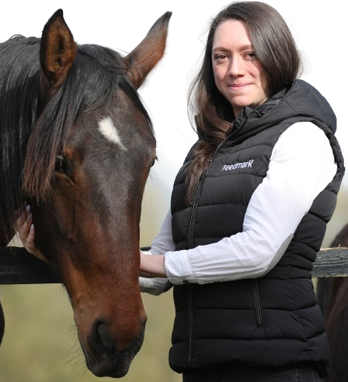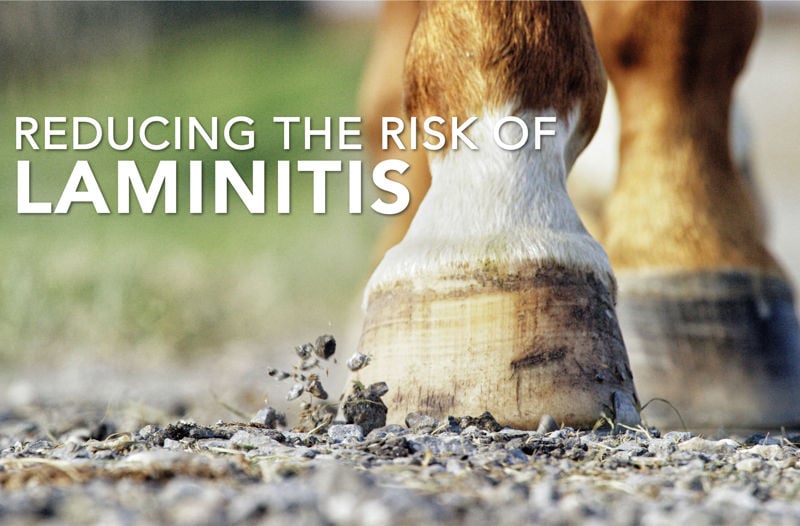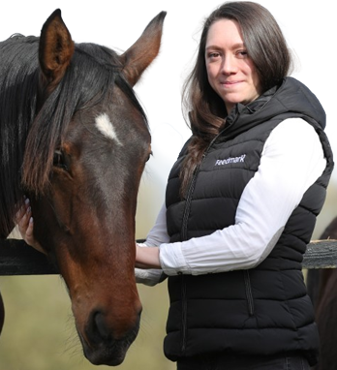The term Laminitis refers to inflammation of the laminae - the tissues that bond the hoof wall to the pedal bone. This very painful and debilitating condition is usually associated with overweight horses and those with metabolic issues like Insulin Resistance, Cushings and Equine Metabolic Syndrome.
There are many myths surrounding Laminitis and it is essential that you know the facts so that you can reduce your horse or ponies’ risk of suffering from this condition.
Myth – You should starve a Laminitic horse or pony.
It is never recommended to starve a horse or pony that has been diagnosed with laminitis as this greatly increases the risk of other issues, especially digestive issues such as gastric ulcers. You do however need to review their whole diet to ensure that it is providing an appropriate calorie (energy) intake, fibre (forage) and essential vitamins and minerals.
Myth – Only ponies get Laminitis.
All horse and ponies regardless of their size, breed, workload or age are susceptible to Laminitis. While ponies may be more susceptible to the condition, horses also commonly suffer from Laminitis due to management practices or underlying hormonal conditions to which Laminitis is associated with.
Myth – Laminitis only occurs in the spring.
Laminitis can occur at any time of the year. Whilst it is more common for horses and ponies to suffer from Laminitis when the spring grass comes through, Laminitis commonly occurs in the autumn and even throughout the summer especially if the summer is very wet and warm. There is no time of the year when a horse cannot get Laminitis if not managed appropriately.
Myth – Laminitis only occurs in the front feet.
The signs of Laminitis tend to be more prevalent in the front feet, however, all four feet can be affected by Laminitis. The mechanisms of Laminitis are not specific to which feet they affect, and horses can get Laminitis in their hind feet and not their fore feet, only one foot, or in all four feet at once.
What is Laminitis?
Laminitis is when damage or disruption occurs to the laminae and the severity will dictate how painful it is for the horse and what degree of lameness it causes. Most cases of Laminitis fall into one of the following categories:
- Hyperinsulinemia associated Laminitis – considered to be the most common cause and includes Laminitis associated with PPID and EMS.
- Mechanical Laminitis.
- Laminitis related to inflammation or toxemia.
What are the risk factors and signs of lamintis?
Approximately 3-5% of the equine population is affected by Laminitis and some of the risk factors associated with the development of Laminitis are:
- High intakes of sugar and starch in the diet.
- Insulin dysregulation, PPID.
- Weight gain or obesity.
- A history of Laminitis.
Knowing the signs of Laminitis will help you to detect it early which greatly increases the chance of recovery. Some signs such as shortened stride or reluctance to turn can be very subtle and easily missed. Other signs include:
- Lameness.
- Abnormal stance.
- Strong digital pulse.
- Hot feet.
- Reluctance to move, turn or walk on stoney ground.
- Changes in gait i.e., ‘pottery’ movement.
If you think your horse or pony has Laminitis, get in contact with your vet immediately to get advice on management and treatment if it is required. Laminitis can be incredibly painful and debilitating so identifying it and treating it quickly is imperative.
Managing weight
Body condition scoring is a great way to actively keep an eye on your horse’s weight. It is a hands-on approach that allows you to assess different areas of your horse’s body for fat and muscle coverage. This is better than weighing your horse with a weight tape as a weight tape won’t determine how much fat your horse is carrying, although you can use body condition scoring in conjunction with a weight tape to allow you to track any changes.
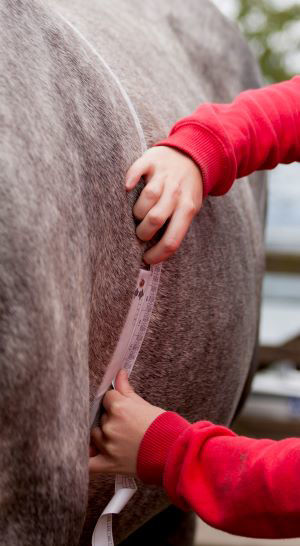
Top Tip: Use body condition scoring in conjunction with a weight tape to allow you to track any changes.
A suitable exercise regime will help your horse or pony to maintain an ideal bodyweight however exercise and diet need to be used in conjunction to manage weight effectively.
Managing diet for horses with laminitis
Feeding an appropriate diet will help to reduce the risk of Laminitis occurring or reoccurring in horses and ponies that have already suffered from this condition. There is no magic cure that will prevent Laminitis from happening, however, with careful management, you can greatly reduce the risk of your horse or pony suffering from Laminitis. Feeding a diet that provides an appropriate calorie (energy) intake is important to avoid unwanted weight gain and obesity.
Forage should always form the basis of every horse’s diet and for overweight horses and ponies this should be fed at a minimum intake of 1.5% however it is important to get advice from a nutritionist or your vet to ensure you are feeding the right quantity if you are concerned.
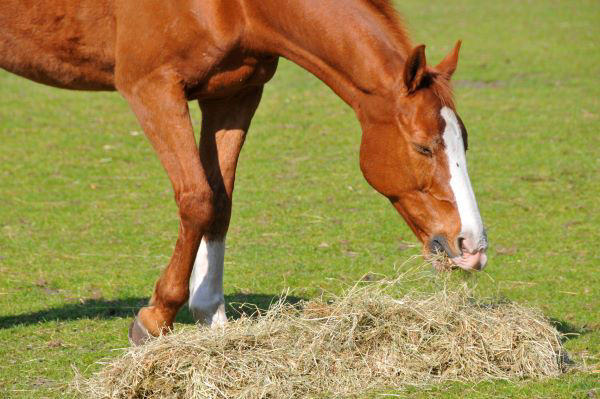
Forage should always form the basis of every horse’s diet
The type of forage that you are feeding is also important so take into account the digestible energy, sugar and starch content. You may need to consider management practices such as soaking hay, restricting grazing through muzzling or strip grazing and slowing down hay or haylage consumption via the use of haynets or trickle feeders.
What is included in your horse’s bucket feed is also important. Consider their calorie requirements, would a balancer be more appropriate? Feed products that have low sugar and starch levels, however, also take into account the feeding rate of different products as this is what influences the quantity of sugar and starch your horse will actually be consuming.
For any advice or questions you may have, please don't hesitate to reach out to our expert nutrition team. You can call 0800 585525 Monday-Friday 8:30am-5:00pm. Email [email protected], or send us a DM on social media.

